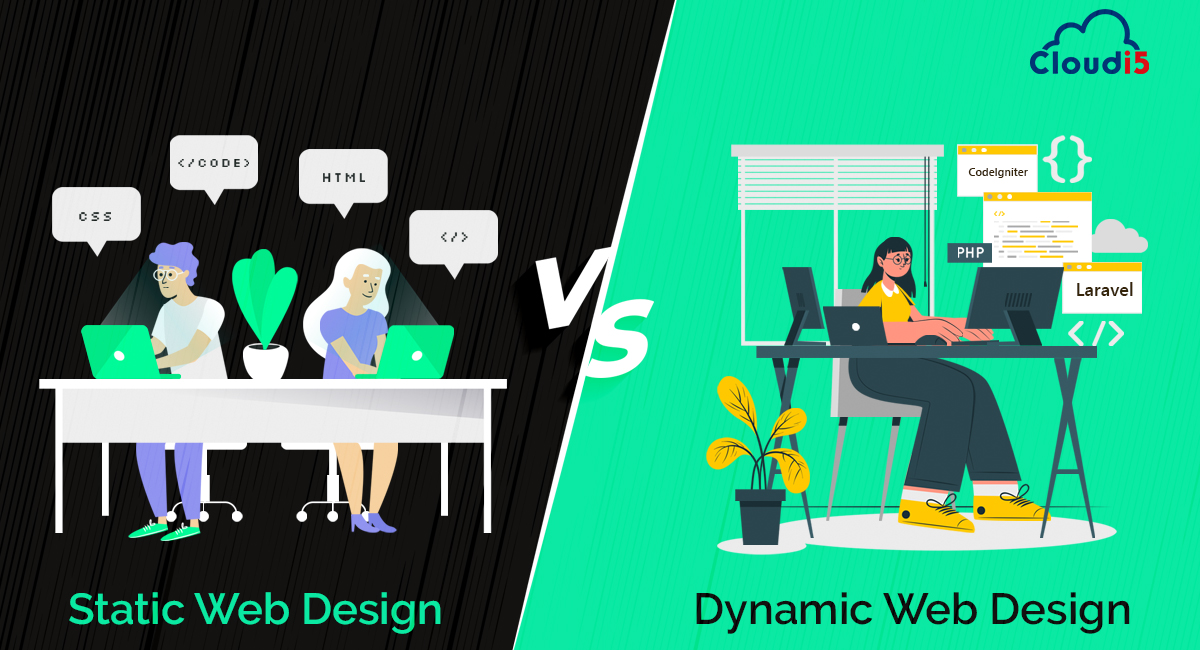
Static Vs Dynamic Web Designs
A website is the representative of your business. It contains all the information that you decide to share with users. Hence, the website should be designed according to your business needs. A reputed web design consultant or company will help you to choose one for your business.
Web design is classified into two types:
- Static web design.
- Dynamic web design.
Both the designs are different in appearance and functionality. The web server and the web browser exchange information every time the user opens the website. Based on this transaction and web design the website displays the content. To coin it better let's dig in more about static and dynamic web designs and their purposes.
Static website:
Flexibility and functionality
The information displayed on the static website is the same for all the visitors. These pages are written using HTML, JavaScript, CSS, etc. In this type, the server receives the request and sends the same response to every visitor. HTML is a markup language that gives structure to the website. Whereas, CSS allows the designer to style the pages by changing colors, fonts, and transitions. The number of pages and format is fixed. Changes can be manually done through coding. The designer can add any special effects and functions with the tool available. Web design depends on the nature and purpose of connecting with users.
Flexible features
- Flexible features
- Easy creation
- Simple access
- Quick loading
- Less costly to develop and maintain
- Rarely changed
Security
Static websites do not require a database. It has a minimum threat of code injection. Plugins and dynamic software are not used in a static design. Therefore this type of website has fewer issues and performs well with limited pages.
Dynamic website:
Technicality and functionality
Dynamic websites display information based on the user. They provide distinct data to every visitor. It takes a little longer to load pages. Dynamic design requires PHP, MySQL, AJAX, ASP, PERI, and CGI, etc to create an automated environment for the execution of tasks. The programming languages are used to create communication and implement algorithms. Some of them are JavaScript, Coffeescript, Python, Ruby, PHP, Swift, etc. It needs client-side scripts and server-side code for designing and managing tasks.
Web framework software is used to support the development of web applications, services, resources, and application programming interfaces.
Some of them are listed below:
- Ruby on Rails
- Django
- Bootstrap
- WordPress
- Drupal
- NET
Dynamic pages are connected to the database which provides different information in an organized and structured fashion to carter to the need of different users. The database is the information stored at the backend. They are of two types SQL and NoSQL. The former provides structure and the later offers flexibility to build and maintain the applications.
Some of the database used is:
- MongoDB – an open-sourced NoSQL database.
- Redis – a popular key-value store used to retrieve data faster.
- PostgreSQL – open-sourced SQL database.
- Oracle – an enterprise SQL database.
Protocols like HTTP, DDP, REST are used to pass on the information back and forth between the client-side and the server-side. It is an interactive page where the user is allowed to feed input and interact while browsing the website. Though it looks complex it is a user-friendly design.
Important aspects:
- Important aspects
- Complex to develop
- Expensive
- Interactive platform
- Serves multiple purposes
- Slow loading
- Easy to update
- Management of data
Security
The dynamic website uses web content management systems to manage the content in a user-friendly mode. Dynamically generating content affects the performance of a web server. It deprives the scalability of the website while creating security vulnerabilities.
Both static and dynamic web designs have specific benefits. Opting for one of them depends on the purpose of your website. Some businesses require static web design while others may need a dynamic design. A website that requires less functionality like documentations can choose a static design. Facebook is a dynamic website with many functions. Hence, the web design should be decided according to the functions the website is expected to perform.
Trusted By












Leave Comments